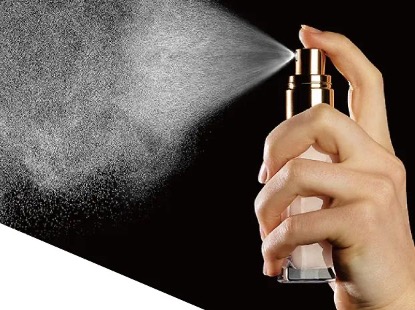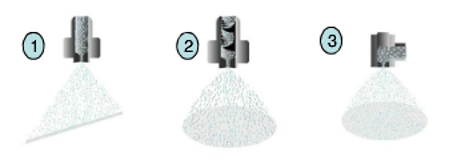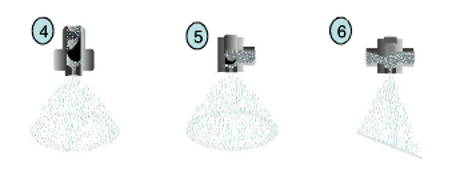Spray pump is a pump product that atomizes the contents and sprays them out.
Classification of spray pumps
At present, there are many models and styles of hand-snapped pumps on the market, often with detailed descriptions of each model of pump, but from its structural design and technical aspects, can be broadly grouped into the following six categories.
(1) The first type
general operation pump
This pump in the hand press, under the action of force can make the required product spray out. The acceleration of pressure and the size of the force have an impact on the working state of the pump. Strong and rapid pressure can achieve the best spray effect on this pump(fine droplets, larger fog cone or range over, etc.).
(2) The second type
ordinary two-stage pump
This pump is equipped with a spherical ball seal and a second stage plastic seal. The pre-pressure of the second stage can make the pre-pressure material spray liquid through the nozzle.
(3) The third type
modified two-stage pump
The operation principle of this pump is similar to the above spherical round seal and plastic seal two-stage pump system. It doesn’t use of ball seal in the structure, but uses the principle of shaft ring pressure sealing, superior performance than the former.
(4) The fourth type
Such pumps share the same working principle with the third type, but no separate air supply channel, it’s completely sealed, isolated from the atmosphere, it must be inflated. The type of pump actually belongs to a quantitative pump.
(5) The fifth type
This type of pump is also similar to the two-stage pump. It’s usually under non-inflatable pressurized conditions, once the tank is filled with air, it will seal itself. When the piston is snapped, the pump’s passive piston compresses the spring so that the pump becomes a top-reverse valve. The contents of the container can only be discharged to a predetermined volume when the active piston is pressed downward to a set distance, and will not be discharged when the piston is not at a set distance, thus ensuring the accuracy of the discharge. This kind of pump also belongs to the quantitative pump.
(6) The sixth type
This is a new pump system improved from fifth type of pumps. During usage, only in the valve down condition the container is sealed. The content of the pump dosing chamber is sealed between the sleeve and the pump body wall, and the contents of the dosing chamber are discharged when the nozzle is pressed, which prevents the chance of contact between the liquid in the container and the metal parts and ensures that the liquid will not be contaminated and affect the quality and effect.
Of course, different manufacturers have their own system of design styles and features to form their own classification series, but all changes do not deviate from its essence, are not across the above six aspects.
Spray pump working principle
The first time the press head, (because the body and the ball valve seal) the body sealed gas will be compressed, when the piston is pressed into the lower end of the body, the gas in the body will be discharged from the nozzle through the gap between the main column and the secondary column, when the press head pops up, the piston and the secondary column is sealed, the piston and the body is also sealed, and then rising under the action of spring force, so that the body to form a sub-vacuum state and suction ( or from the physical point of view, the force of atmospheric pressure), it will make the liquid through the suction tube, ball valve and into the body.
When pressed again, the ball valve is sealed with the body, the piston is sealed with the body/sub-pillar, the liquid in the body is squeezed and the pressure is generated, when the pressure of the liquid acting on the piston is greater than the spring force, the spring will be compressed, so that the sub-pillar and the piston are open, the squeezed liquid will quickly pass through the main pillar, the press head and the cyclone slot of the fog point and produce atomization. The effect of spraying
The following sprayers, and cosmetics in the fragrance pump head principle is the same, are blocked to change the direction of the spray, but this spray needs to have enough travel and pressure, otherwise it is difficult to achieve the desired effect, our existing cosmetics pump head with the principle of the proposed basically the same: ① This flat fan-shaped spray is the main column and the piston open state, so that the piston will be quickly squeezed through the main column, press the head and the point of the cyclone slot to produce the effect of spray.
① This flat fan-shaped spray is controlled by the nozzle design deformation. But the formation of the pump pressure needs to be sufficient, otherwise the spray out of the industry will not be very far.
② This full cone spray pattern will be a little wider, and very uniform.
③ This nozzle inside the use of rotating blades to control the liquid, which helps the liquid to form a kind of outward diffusion and achieve the spray out of the fog taper is also relatively wide.
④This empty taper spray type spray out of the liquid to form a circular shape, there is very little spray in the middle, this nozzle is controlled by the internal rotating blades, when the liquid rotates through the internal rotating blades after the nozzle spray out, it will form a circular fog.
⑤ The principle is similar to ④.
⑥ This kind of air atomization spray is relatively rare. Production process—Production process flow chart
Testing and quality control
Test methods
(1) Appearance
It means visual inspection under the standard light source at a distance of about 40 cm, or visual inspection under the natural light source at a distance of 50 cm for 3 seconds.
(2) Specifications and dimensions
General-purpose gauges or special gauges with 0.02mm accuracy are used for inspection.
(3) Weight, pumping volume
Test with 0.01g precision electronic balance.
(4) Pump out volume
Use water as the test contents, first nozzle / foam pump head up to pump more than 5 times to ensure that the spray / pump out volume is stable, start pressing the nozzle / pump head 10 times continuously, weighing 10 times the average of the total weight of the spray out / pump out water.
(5) The number of empty press / first spray
Use water as the test contents to test the press frequency once per second, calculate the number of presses from the beginning of the press to start spraying (including the first spray).
(6) The down pressure
Uniform pressure to the pressure head to the screw tooth starting position or the maximum pressure when the position reached by normal use.
(7) Pressing head rotation open force
The maximum torque to rotate the press head open at a uniform speed.
(8) Plating, painting, sandblasting layer and other decorative fastness adhesion
Decorative fastness with a razor blade into 1mmX1mm 25 small squares, with 3M tape on the scribed parts, after a minute to 45 degrees in the direction of quickly tear off the tape, check the degree of shedding (if in a grid, only part of the tear off the paint surface, recorded as 1/2 grid, if the entire surface of a grid is torn off, counts 1 cell.
Post time: Nov-13-2022


